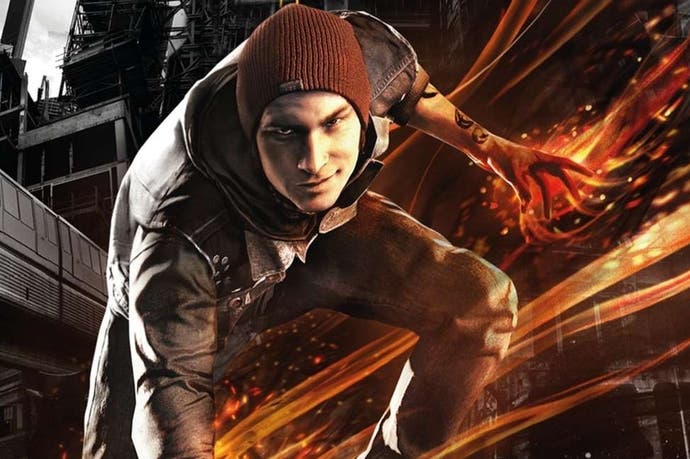Performance analysis: inFamous: Second Son
Digital Foundry gets to grips with Sucker Punch's technologically outstanding PS4 exclusive.
Following in the wake of technological showcase that is Killzone: Shadow Fall, Sony's first-party studios surprise and delight us once again with a stunning new workout for the next-gen PlayStation 4 hardware - inFamous: Second Son. Unfortunately, owing to a combination of factors (GDC, Project Morpheus, Metal Gear Solid and the late arrival of inFamous code, if you're wondering), we didn't have the time to bring you a full tech analysis at launch, but we couldn't mark the arrival of this beautiful title without a spot of Digital Foundry coverage.
We loaded up the game and played through the first hour, bringing you this initial performance analysis, covering off a range of different gameplay scenarios where we can see how Sucker Punch's brand new PlayStation 4 engine performs. The virtually uninterrupted captures include stunning vistas, detailed cut-scenes, exciting set-pieces and intense combat, spoiling nothing other than establishing the characters, seeing how Delsin gets his powers and witnessing his journey to Seattle - and his first brush with the anti "bio terrorist" forces that have occupied the city. In short, what we have here is a range of scenarios to show how the new engine performs - and the results are rather intriguing.
There's been some discussion about the performance of the game, particularly in terms of a fluctuating frame-rate, and what quickly becomes evident is that Sucker Punch has opted to continue the strategy it used on its PlayStation 3 titles: a solid v-sync working in combination with a completely unlocked frame-rate. The difference here is that while the previous titles in the series would frequently drop beneath the 30fps threshold, it takes a mass of action and GPU-intensive post-processing effects to truly impact inFamous: Second Son's performance. Bearing in mind the high levels of detail, and the overall complexity of the rendering pipeline, that's a stunning achievement.
"This is an absolutely beautiful game - and a strong performer. Across a general run of play, inFamous: Second Son spends most of its time north of 30fps."
However, the disadvantages of the unlocked frame-rate are pretty clear when looking at the frame-time graph. Here, we study the amount of time each individual frame is on-screen. A locked 30fps or 60fps gives a level of consistency that is considerably easier on the eye, and helps to ensure a level response in terms of controller input lag. inFamous: Second Son spends much of its time between 30-40fps during gameplay - those additional frames over 30fps manifesting more as judder as opposed to a significantly smoother experience. It's hardly a massive issue, but a Killzone-style frame-rate limiting option would be welcome.
Certainly, the game is a visual feast. Similar to Guerrilla Games' latest work, inFamous operates with a materials-based deferred renderer, which not only allows for a multitude of dynamic light-sources, but also lights the scene according to the physical properties of the objects present - for example, reflectivity and the roughness. An energy-conserving model like the one used here treats light as energy, calculating how light spreads across the surface over the material according to its physical properties. The results can be absolutely beautiful to behold - reflections in particular (what looks like an expert blend of pre-baked and full real-time) can look sublime.
Other highlights in the rendering include the realistic, wispy smoke and the multitudes of particles that represent the physical manifestation of Delsin's newly acquired powers. According to this leak, he breaks down into 11,000 'ashbit' particles during a single smoke-dash through the air, with the character itself composed over 60,000 polygons.
Also worthy of note is the implementation of state-of-the-art anti-aliasing, believed to be a variant of SMAA T2X, as found in Crysis 3. This is one of the best post-process anti-aliasing techniques we've seen, combining a new take on MLAA with a temporal element. Edge-smoothing is phenomenal, and while there is some ghosting, it is not any kind of real distraction during gameplay.
We've only just scratched the surface of inFamous: Second Son right now. Indeed, the video above constitutes the entire amount of time we've spent with the game thus far - but what's clear is that as a technological statement, this is exceptionally strong stuff, especially bearing in mind that this is a first-gen PlayStation 4 title.










